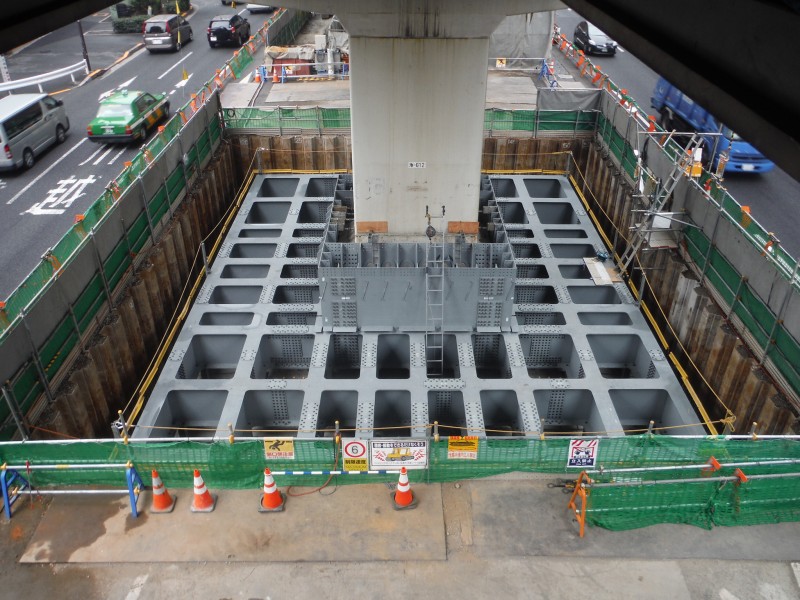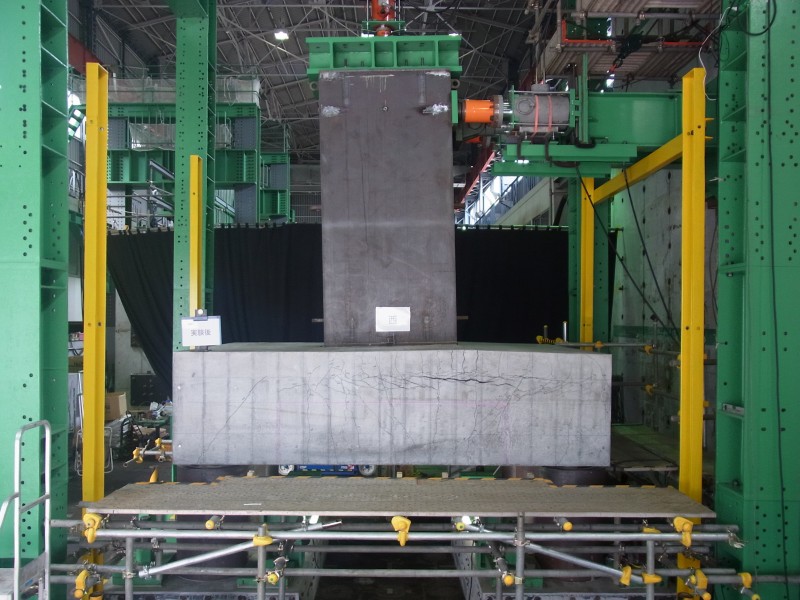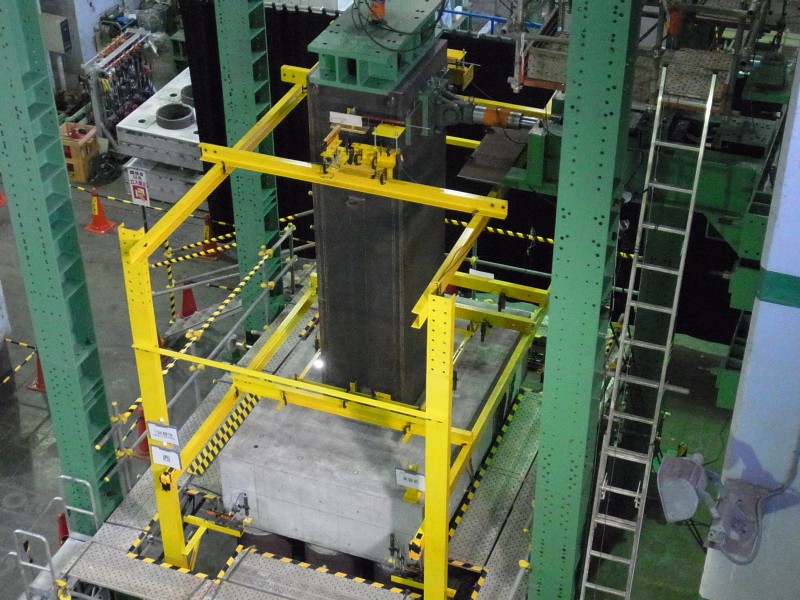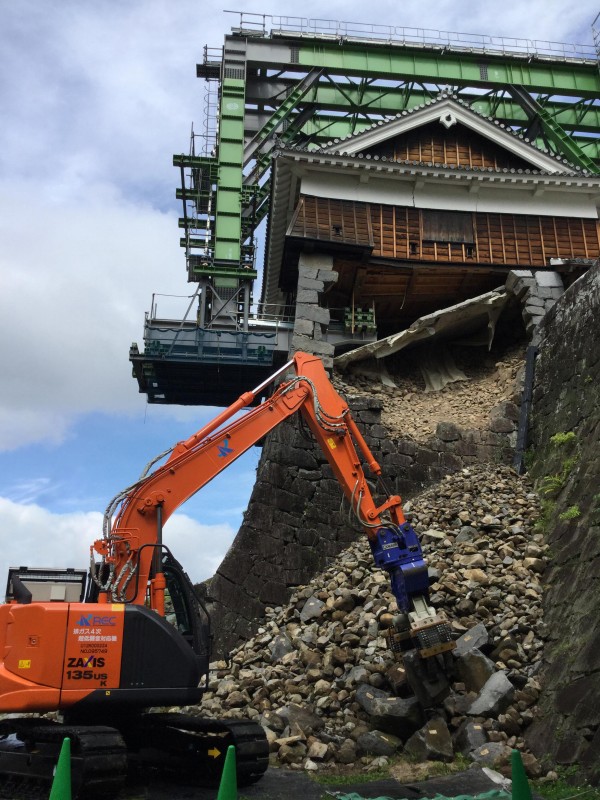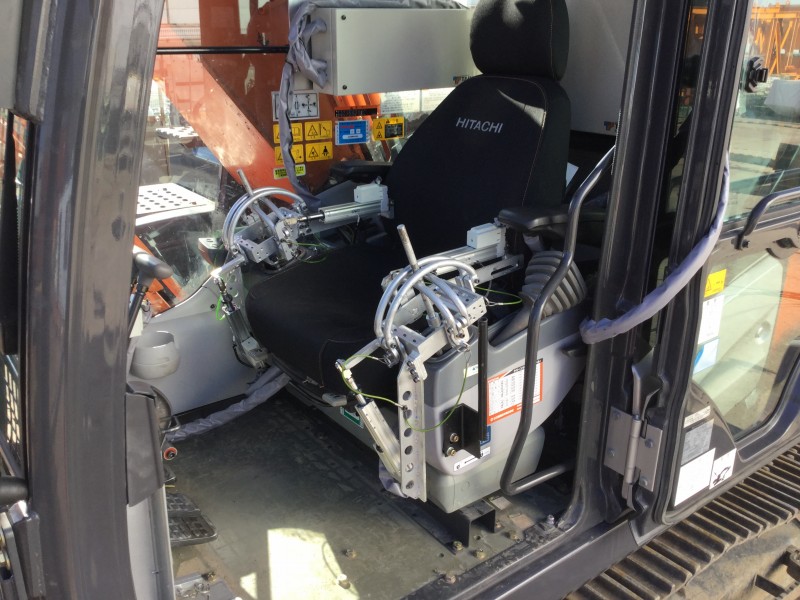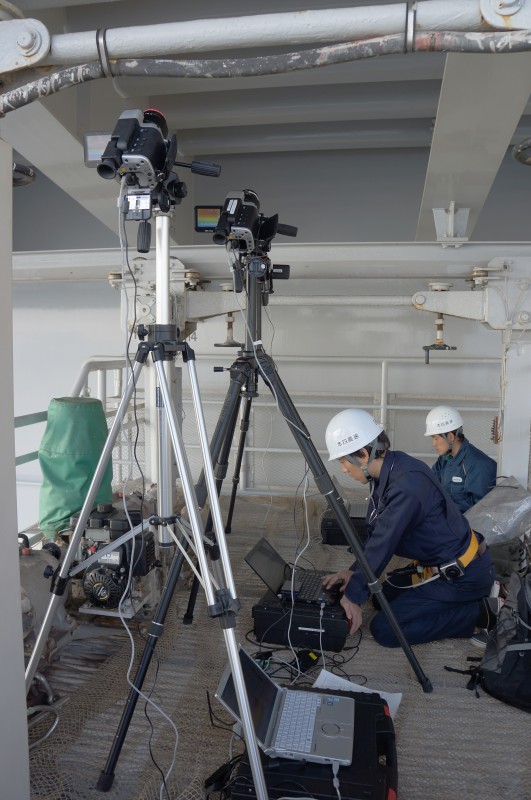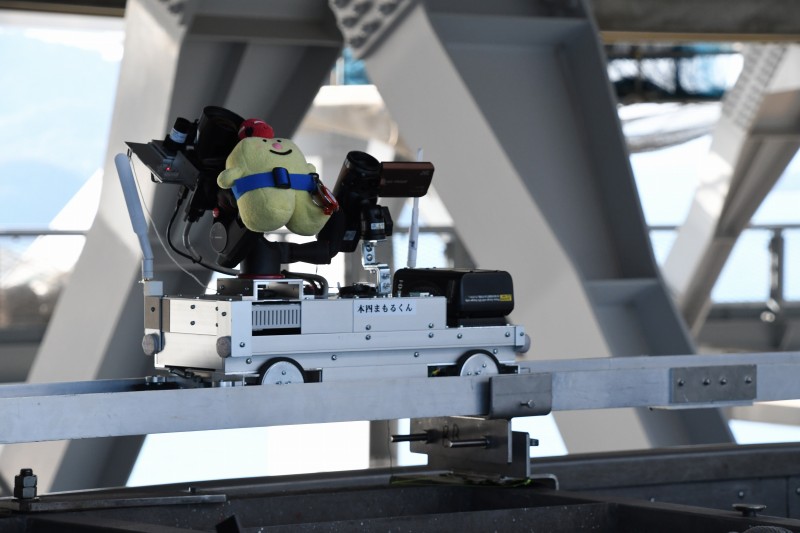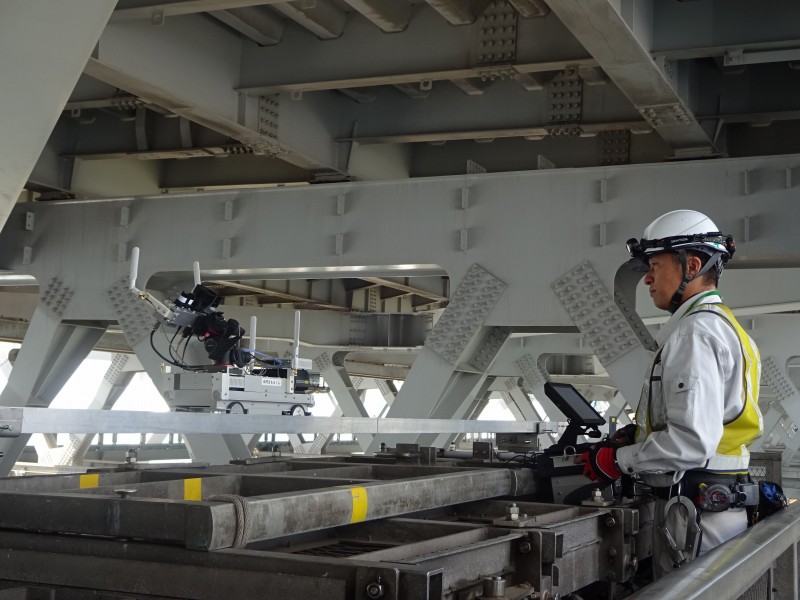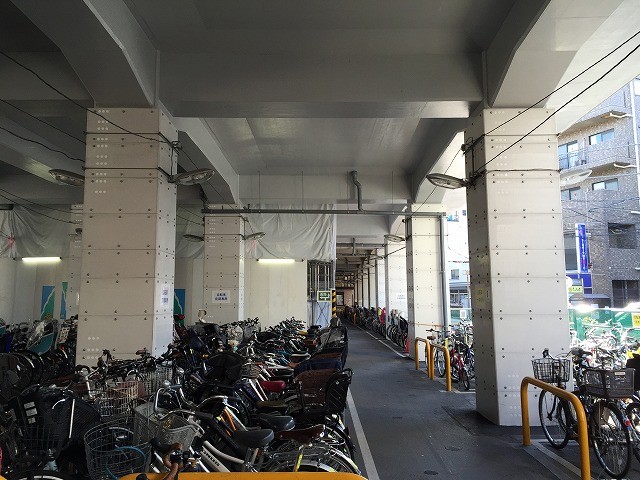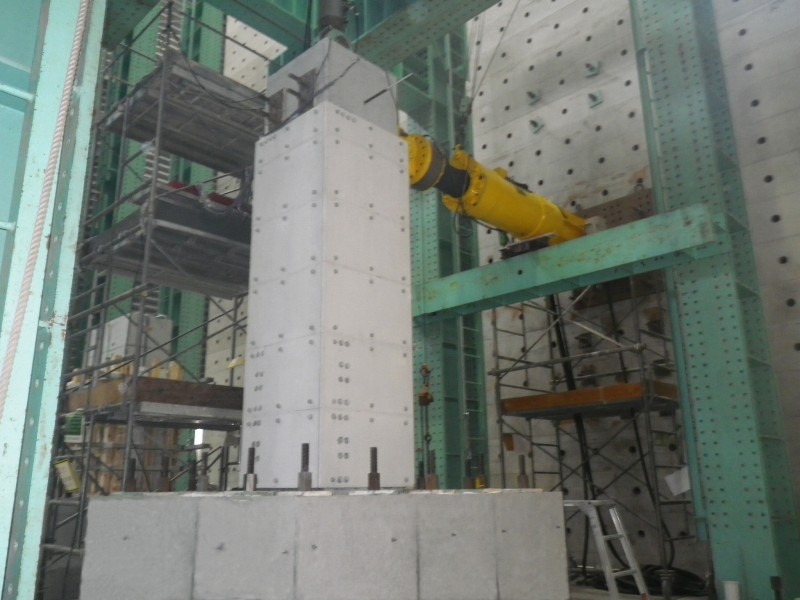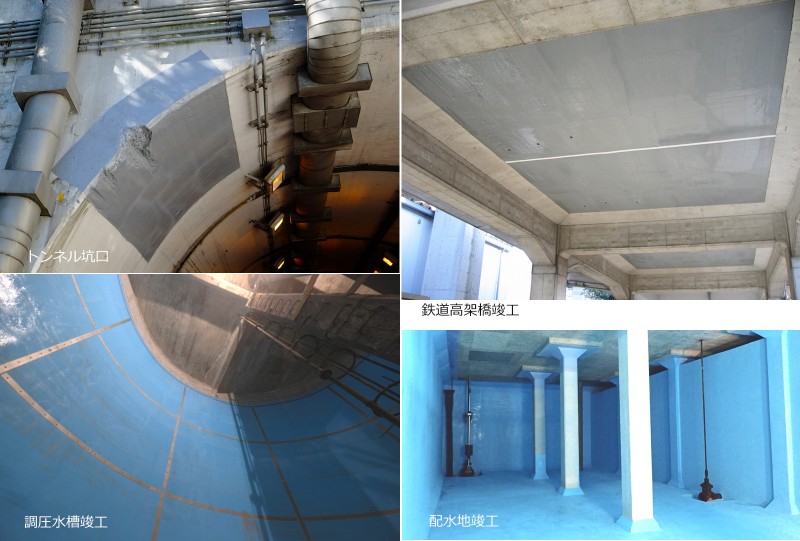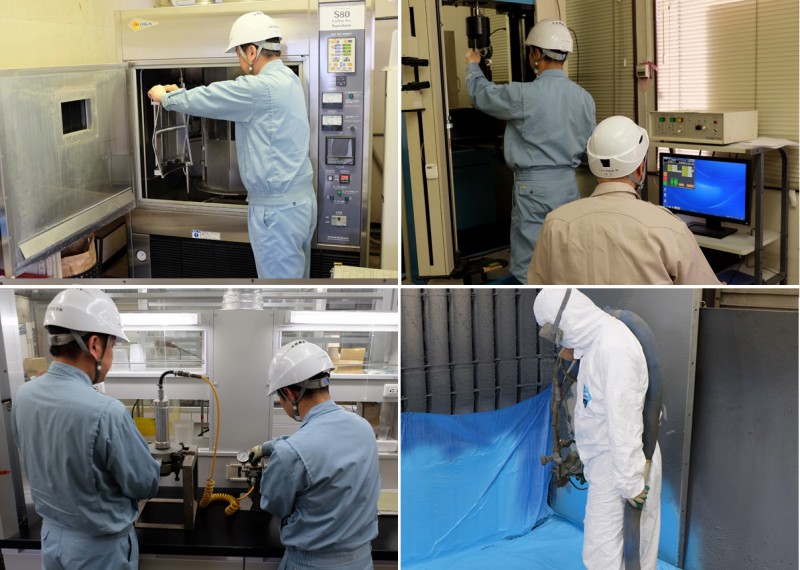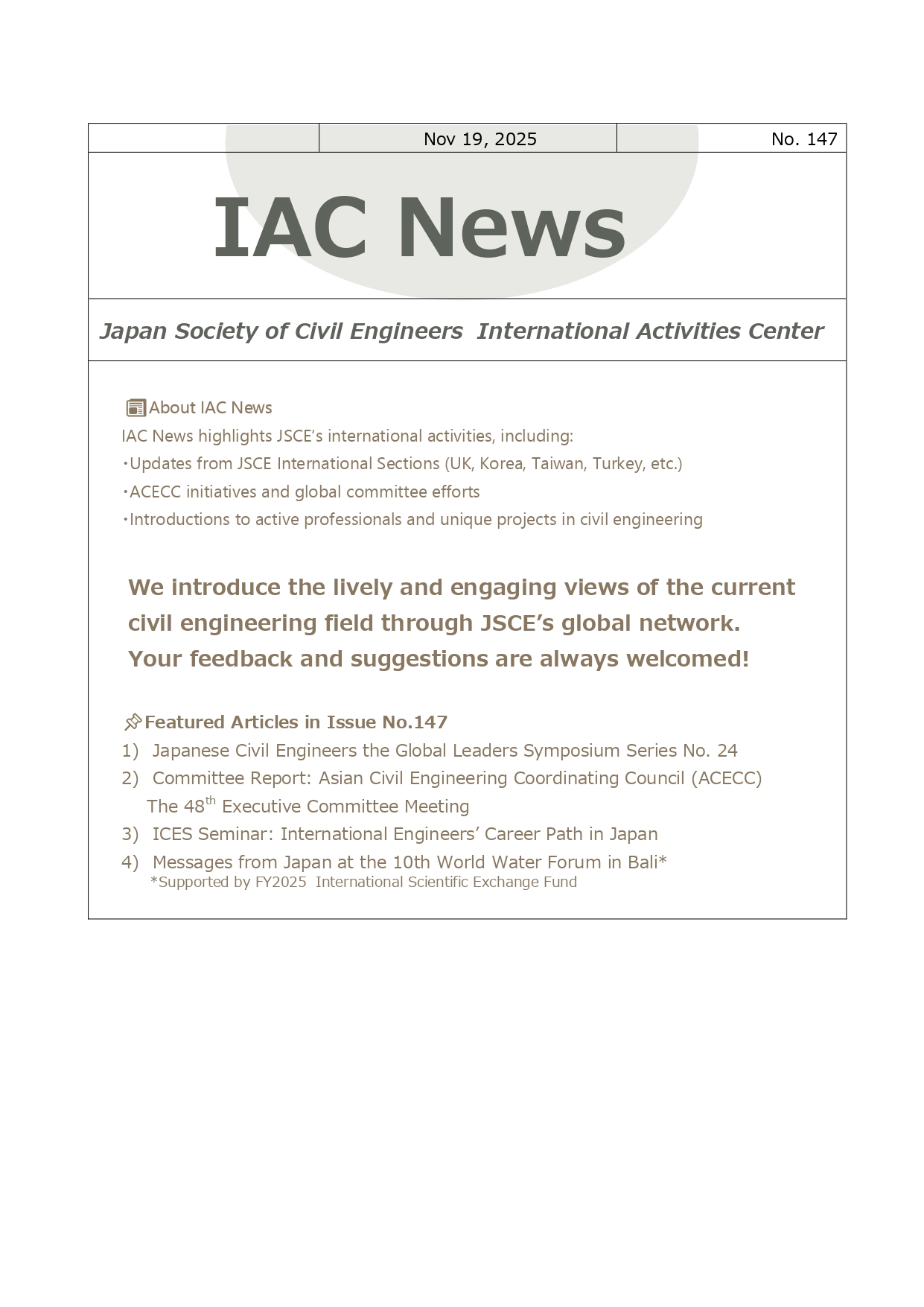2017 Innovative Technique Award
1.Development of a Hybrid Structure Footing Embedded with Plane Grid Steel Frame Capable of Reducing the Anchoring Depth of a Steel Pier
- Shigeru Ihara (Metropolitan Expressway Company Limited)
- Hirofumi Nakano (Metropolitan Expressway Company Limited)
- Toshiaki Kato (Obayashi Corporation)
- Takashi Saito (Obayashi Corporation)
- Shigehiko Saito (University of Yamanashi)
The viaducts of urban expressways often employ bearing plate-type anchor frames in the fixation structure of steel pier and footing. However, these anchor frames cannot be used when there are limitations related to depth, e.g., restriction due to ground covering and the existence of adjacent structures. Therefore, a hybrid structure footing, in which plane grid I-shaped steel frame is embedded, has been newly developed. The frame performs as strength member for footing as well as anchorage for steel pier. Based on this structure, the roadway of the double-deck viaduct supported by racket-shaped piers between Itabashi and Kumano-cho Junctions in Central Circular Route of the Metropolitan Expressway could be widened. This technology is highly flexible for urban severely restricting conditions and it can considerably contribute to infrastructure development that will become increasingly important in the future.
2. Remote Control Device “Surrogate” for Construction Machine with easy retrofitting
- Naoki Mori(OBAYASHI CORPORATION)
- Hiroshi Furuya(OBAYASHI CORPORATION)
- Hiroaki Kamijo(OBAYASHI CORPORATION)
- Mitsuhiro Nomura(TAIYU Co., Ltd.)
"Unmanned construction" by the remote controlled construction machineries work for initial disaster recovery support. However, due to its high price and small number of machines, it is difficult to procure the machine properly. To make unmanned construction system and remote controlled construction machine more familiar and flexible with low price, “Surrogate” has been developed. “Surrogate” is easily retrofitted to conventional construction machine and can switch between remote control and boarding control with device attached to machine. By adopting this device, it makes possible to operate in various construction sight and is expected to promote the installation of unmanned construction machineries.
3. Crack detection system for fatigue cracks in orthotropic steel deck (Crack detection system for weld-bead penetrating crack in orthotropic steel deck based on temperature gap detection using infrared thermography)
- Yoshiaki Mizokami (Honshu-Shikoku Bridge Expressway Co., Ltd)
- Yoshihiro Kobayashi (Honshu-Shikoku Bridge Expressway Co., Ltd)
- Takahide Sakagami (Kobe University)
- Yui Izumi (University of Shiga Prefecture)
- Tokihide Oto (Bridge Engineering Co., Ltd)
It is difficult to prevent initiation and propagation of weld-bead penetrating fatigue cracks in orthotropic steel deck. Therefore early detection and appropriate propagation monitoring for these fatigue cracks are very important in bridge maintenance program. Conventional inspection methods have problems in accuracy, efficiency, labor and cost, since magnetic particle testing is applied to potential crack existing portion estimated by visual inspection of paint cracking or stain leakage. Proposed inspection system is developed by combining “NDT based on temperature gap detection using infrared thermography” and “automatic crack detection system by data processing”: this enables us to conduct effective and low-cost inspection for early detection and monitoring weld-bead penetrating fatigue cracks without removing corrosion protection coating.
4. The Seismic Retrofitting Method Utilizing Precast Panel and High Strength Fiber Reinforced Mortar ”Combination Panel Method”
- Ryota Kasakura (RAILWAY TECHNICAL RESEARCH INSTITUTE)
- Masaru Okamoto (RAILWAY TECHNICAL RESEARCH INSTITUTE)
- Satoshi Maehara (TOKYU CONSTRUCTION CO., LTD.)
- Suzuki Masamitsu (TOKYU CONSTRUCTION CO., LTD.)
- Hirofumi Hompo (HOKUKON CO., LTD.)
With the progress of seismic retrofitting of RC railway viaduct columns, the construction is increasing under the viaduct that requires early release. In recent years, productivity improvement is also required in seismic retrofitting works, due to aging of construction workers and labor shortage due to decrease of young workers.
This technology solves these problems by pre-casting of seismic retrofitting. In addition, the authors have established design and construction technology for seismic retrofitting of RC columns by using pre-cast panels and high-strength fiber reinforced mortar and realize labor-saving and speedy construction work. Consequently, we can respond to the labor shortage in the construction industry in the future, and contribute to the promotion of seismic retrofitting and life extension of RC structures.
5.Development of Function Maintenance and Improvement Technology of Concrete Structure using Polyurea Resin (Toughness Coat)
- Masami Koshiishi (Shimizu Co., Ltd)
- Kazunao Ide (Mitsui Chemicals Industrial Products Ltd.)
- Masahiko Takegami (Shimizu Co., Ltd)
- Takatoshi Asaka (Shimizu Co., Ltd)
- Masafumi Kubo (Shimizu Co., Ltd)
Currently, rational maintenance and long life of concrete structures is an urgent issue, and large-scale repair and renewal of infrastructure with nearly 50 years since completion has become necessary. The technology presented here (Toughness Coat), is an epoch-making technology that focus on polyurea resin. Its material properties, were carefully examined and tested, developing it into the actual structure. The effect is to maintain and improve functions such as prevention of peeling, securing of waterproof, improvement of durability and impact performance in actual concrete structures. From the above, its usefulness was confirmed, and it is thought it can contribute greatly to the realization of a safe and secure society.

